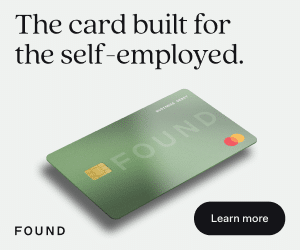In order to really grow your freelance business, you should take on FEWER clients.
It seems counter-intuitive at first. Fewer clients = more revenue and growth? How?
The thing I’ve learned about client services is there is an allotment of energy you expend servicing each client you have. You email back and forth, you have meetings, you spend time working on their projects, etc.

Get Weekly Freelance Gigs via Email
Enter your freelancing address and we'll send you a FREE curated list of freelance jobs in your top category every week.
Here’s a list of things I do personally with each client—regardless of the quality level:
- Receive initial inquiry
- Review initial inquiry
- Send qualifying questionnaire
- Review qualifying questionnaire
- Prepare follow-up questions
- Schedule the initial call
- Send a confirmation and agenda setting email
- Prepare for the initial call
- Have the initial call
- Review the call findings
- Do research
- Write a proposal or create an estimate
- Present the proposal or send the email
- Write a contract
- Send the contract and invoice the client
These are all things done in the onboarding phase—before getting to any of the actual working together—and already you can see how this can occupy your mind and tie up your time.
You can, and should, automate as much of this as possible by using editable templates, using contract or invoicing software, reusable email scripts, etc.
Some things can’t be automated and you end up spending time on them.
So if you have to spend time on these tasks, it becomes crucial to select clients that will pay you well for your time. You are already doing the same repetitive, (mostly) non-billable tasks, so it makes sense to target higher paying clients if they are going to take up roughly the same amount of time and energy from you.
How many clients can you service at any given time?
Depending on the project’s size, I can’t service any more than 3 clients at a given time. Not if I want the work to be any good. You might be able to do more, I don’t know, but what I do know is that you also have a limit.
After you cross that threshold, the quality of work you can do on your own starts to drop off and things get sloppy.
Have you figured out what that ideal number of clients is for you? It’s worth taking the time to figure out your capacity.
That number is a way to project how much money you can make while still doing good work. And you want to do good work. Good work brings in referrals to do more good work and helps to create a virtuous cycle that can sustain your business for years.
So let’s take a scenario of one largish project per month. That’s twelve large projects per year at an average of three months per project from start to finish.
Now, let’s assume you are charging an average of $5,000 per project (and for the sake of simplicity you are getting paid the full sum up front for each project).
$5,000 x 12 = $60,000
Is $60,000 (before taxes) enough?
It might be for some. If that’s the case, great. You don’t need to change anything. But if it’s not, you might think about raising your prices.
Not because you want to stick it to your clients, but because if you want to have a business that is thriving (and satisfying), you simply have to make enough money to support yourself. Sometimes that means letting go of smaller clients so you can pursue larger clients.

So let’s say we raise our prices by 50%. Now we are at $7,500 for an average project.
$7,500 x 12 = $90,000
Now we are starting to get somewhere. $90,000 is nothing to sneeze at. You’re that much closer to six figures as a freelancer.
I know (hypothetically) that if I average one large project per month at $7,500, I’ll be pulling in a decent wage.
In a perfect world, I would stagger each project so that when one is finishing up the other is starting. And so on and so forth. So I know I can service 3 large projects staggered at various stages over a 3-month period.
So now the question becomes how can I sell a $7,500 vs. a $5,000 project? What do I have to include in the scope or who do I have to be pitching it to for it to sell at the same rate as the $5,000 project?

Finding answers to these questions and applying what we learn to our business is being strategic. Now we’re putting a more focused effort into our business that is light years ahead of simply taking on whatever client walks in our door.
This is how you level-up.
How to increase your rates by 50%
The first question that comes to your mind when you hear this is, “Well, what if I can’t find $7,500 projects?”
It’s a fair question, but when you narrow your focus and say, “I’m only going to take on projects of a certain size” you start to do things that will enable you to land those bigger projects.
It’s like the difference between a creative project with no constraints and one with a detailed brief. The project with a detailed brief frees you to work within those particular limitations.
Any creative who’s ever worked on a project with no creative direction knows how hard it is. If there are no parameters to work within, you don’t know where to start and where to end.
The possibilities are endless, and you are paralyzed with the paradox of choice. Yet if you add in constraints (style, target audience, project goals, etc.), suddenly it frees you by giving you guidelines to work within. It gives you a direction to aim for.

It’s the same thing with limiting yourself to a certain size project. I call this my Minimum Engagement Amount (MEA). I ask myself this question, “What is the smallest size project I will work on (in revenue terms)?” The answer to that question gives me my MEA.
Placing this constraint on myself forces me to pursue projects of a certain revenue size or higher.
So when a project comes around with a $2,500 budget, I say no to it because the time spent on that project has an opportunity cost. I have limited capacity and filling that seat means potentially giving up $5,000 worth of work. That’s the opportunity cost of taking on that smaller project.
Understanding your opportunity costs
While it’s hard to pass on money that is staring you in the face (and if you really need the money, you should probably take it), what I do when I have spare time, or I’ve passed on a low-value project is I reinvest that time saved back into growing my business.
I work ON my business instead of IN my business. What I mean is, I work on long-term planning and business development. For example:
$175,000 from ONE blog post!
I wrote a blog post back in 2012 that brings in most of my traffic and is how most of my clients find me. Since then, I can probably attribute about $175,000 worth of business directly to that 1 blog post. (1 blog post! I think that is pretty good ROI for writing one measly little blog post.)
Now, there’s no guarantee that if you write a blog post, you are going to get that type of return on it, you likely won’t. The point is that I wrote the post during my down time.
Imagine if I was too busy to write it because I was working with a low-value client and never got around to writing it?
Every project and every client you take on have an opportunity cost associated with it.
So ask yourself if it is worth it. Ask yourself if it’s a project you can do good work on. Ask yourself if it pays you a fair wage, and if you’ll like working with this client that you are giving up your time for.
If the answer to those question is no and you can at all afford to pass on the project, do it.
Working with crappy clients, getting paid less than you deserve, and doing work you don’t believe in are all signs you could be doing something else to improve your business and see it pay off down the road.
What to do right now
So how can you apply all of this to your freelance business? First, realize you need to cut off low-value clients in order to scale up. If not today, then at some point in the near future. Here’s how to professionally fire a client.
With limited capacity, you can only take on so many clients. If a low-value client is taking up one of your precious seats, it’s like an anchor weighing you down and eating up your time and energy.
After that, put your foot down and create a minimum engagement amount (MEA). Below that number you don’t take on the client. Soon, you’ll see your business and revenue reaching new heights. You’ll have less work, more revenue, and thriving business.
Keep the conversation going...
Over 10,000 of us are having daily conversations over in our free Facebook group and we'd love to see you there. Join us!




This post could not have come at a better time for me in my business! We’ve just hit 6 months & are ready to start defining who we are and the projects best suited to us. This has been hugely helpful about being practical in choosing our client type – thank you 🙂
I’ve gone back and forth in terms of charging clients what I think I’m worth to charging what I think will attract attention (low rates). It’s tricky, because it looks like I am always competing with those “race to the bottom” designers. The ones that charge extremely low rates. But, at the same time, when I do charge higher prices, I do get better quality clients. Clients that are more serious. In the end, I think you need to charge what you think you are worth, while staying competitive.
Hi Ian-
There is also the theory of low hanging fruit.
While getting a single client that bills $90K a year- that requires a lot of work, there may be things that are easier sales- that generate ongoing profits.
Our first question to our clients is what makes you the most money? Believe it or not- many don’t know the answer.
For us, ongoing printing projects, hosting, and marketing automation bring in continuous work, trust- and revenue- and the bigger engagements come to us because we’re already a trusted vendor who knows and understands their business.
However, there are some people you just need to say “go away” to- because your time is more valuable- so I do agree with the basic premise.
Also- always be ware, too many eggs in one basket always carries a risk.
And you are right about never working for a client you don’t like or respect- those always turn out bad.
Good points David. And I love that question you ask clients.
Do you have any processes, procedures or tips on how to cut off low value clients?
Hi Chaten,
Yes, use a qualifying questionnaire. I send one to anyone who sends me an inquiry.
It includes 5 questions and one of them is a budget question asking if they have a minimum budget and if it is over X amount.
X is my MEA. So any prospects that don’t have that budget will likely not reply. That saves me and them time wasted.
Then I look for red flags of clients that are momentum killers and take up all your time. I also see them as low-value clients and try to avoid them if possible.
I included my qualifying questionnaire, tips on how to spot low-value clients and other tips in my book Work With Clients You Love.
http://insidefreelancing.com/work-with-clients-you-love
I’ve read this message before but somehow you have put it much better.
I currently have way too many low value clients seeking help, and I’ve been thinking about all these questions. You just helped to gel my thoughts.
That list….so many steps before the project even lifts off, and what about the times when you go through them all and the client suddenly changes business direction, so the project is canned? From their perspective it’s nothing, but from ours, it’s hours gone.
Thank you so much Ian.
Thanks Cath. I was a huge revelation for me too when I made this connection.
I was listening to someone talking about creating and selling online courses and they mentioned that the a lot of the effort that goes into creating, marketing and selling a $49 course goes is the same as goes into a $499 course.
Of course, you have to do more to deliver on that higher price but some much of the ground work is the same. So why not get more out of your initial effort and concentrate on quality?
For me, that means delivering quality work for quality clients and getting paid well to do so.
Food for thought…
Hi Ian,
from my perspective of a freelancer, web designer, web developer and a country is not easy to find highly budget projects. Clients have no idea what exactly they want, and they are not willing to pay a lot for a website. Most of my clients come by the word of mouth. If I raise my price I feel this will narrow my income, but reading this article inspired me to establish my MEA and try to raise it.
Thanks for the great article anyway.
Hi Simeon, I think a lot of freelancers have this perspective and haven’t tried raising their prices for fear they will lose clients.
But I can guarantee you that there is someone in your country that is charging double what you are and are doing quite well. Go find them and try to model what they do.
Glad to hear you will establish an MEA. Even if it is a relatively low one to begin with, it will help you be more selective of who you work with. It will also give you some feedback.
Eventually, you will find the sweet spot of charging the right amount to the right people for the right kind of work.
very useful article, thank your for sharing
Would you mind sharing access to that ONE BLOG you can attribute $175K of eventual revenue? Warning: In theory, I have always seen little value in “pissing in the wind” with the whole idea of blogging.
This is so awesome. Thank you!
Hey Ian, Love your website! and this article was awesome. Thank you! Can you share the Blog that you wrote that you feel was instrumental to converting clients. I am just in the stages of narrowing the focus (basically what you have talked about) and would love to read it. Cheers!
Hi Tracy, Glad you liked it. I could share the blog I wrote, but that misses the point a bit, and I don’t want you to look at that blog post and try to model that particular post and think you’ll have success with it. . It’s not what’s in that post that is important.
The point is more about working on your business instead of your client’s business when you can afford to do so.
It could be a blog post, it could mean creating an opt-in carrot to attract subscribers, it could mean guesting on podcasts or creating any number of assets that will pay off down the road.
Mainly it is about saying “No” to projects that are too small so you can build something bigger with your time.
Curious how you would recommend implementing this minimum engagement amount. Is it something you state up front when speaking with clients? Is it posted on your website? How do people know about this? I also run into the occasional small project, adjustment, addition from previous clients – how do you handle those types of very small projects?
Joshua
Thanks for the question Joshua. I include my minimum in a qualifying questionnaire I send to prospects after they contact me. The budget question in the questionnaire asks if they have a budget and is it over X amount. That X amount is my MEA. It implies that I have a minimum amount but isn’t stated as such.
That question gets rid of a lot of tire kickers so I don’t have to waste time speaking to someone who can’t afford to work with me. (It also saves them time too.)
For projects with previous clients, I will occasionally do it to maintain the relationship but not for new clients.